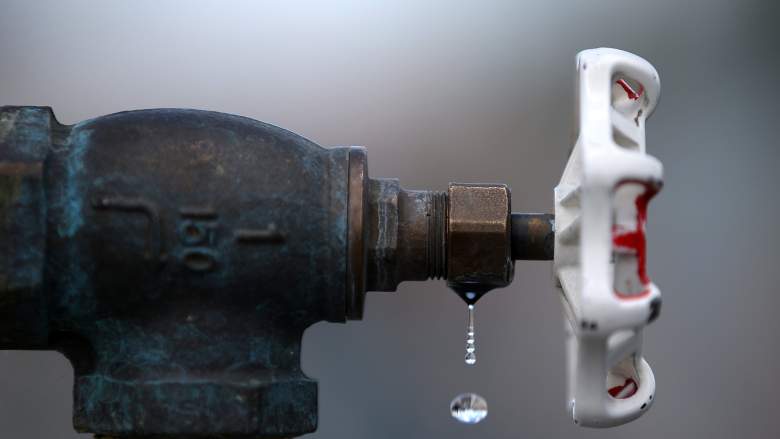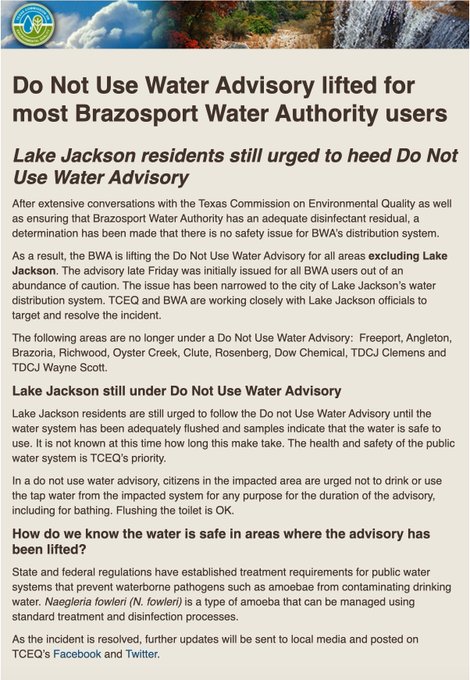
Getty Water drips from a faucet.
A water advisory was sent to residents near Houston, Texas, warning them that a brain-eating amoeba was found in the city’s water supply. The warning was later limited to Lake Jackson, which is located about an hour outside of Houston, Texas.
The Warning Was Limited to Lake Jackson After Initially Including Everyone in the Brazosport Water Authority
The warning was initially sent on Friday night to all the customers who received water from the Brazosport Water Authority, ABC 13 reported. This was later narrowed to residents in Lake Jackson after TCEQ said Brazosport’s water was safe.
Residents in Lake Jackson must not drink, bathe, or cook with their water. They can only use it for flushing toilets. TCEQ reported that the advisory originally included everyone who received Brazosport water out of an “abundance of caution.”
The TCEQ noted: “The issue has been narrowed to the city of Lake Jackson’s water distribution system.”
Areas no longer under a Do Not Use advisory include Freeport, Angleton, Brazoria, Richwood, Oyster Creek, Clute, Rosenburg, Dow Chemical, TDCJ Clemens, and TDCJ Wayne Scott, TCEQ reported.
It’s not known how long Lake Jackson will continue to be under this advisory.
The Amoeba Was Found in the Water Supply
Three out of 11 water samples tested positive for genetic material of the brain-eating amoeba (Naegleria fowleri), ABC 13 reported. This was suspected after Josiah McIntyre, 6, died from the brain-eating amoeba after he had played at a splash pad at the city’s civic center. He died on September 8.
A sample from a water hose at his home tested positive. Two other positive tests were found at a fire hydrant and the civic center fountain, ABC 13 reported.
Half of Lake Jackson’s water is from the Brazosport Water Authority and half is from wells.
The brain-eating amoeba typically infects people if it enters through their nose, the CDC reported. The CDC noted:
Once the ameba enters the nose, it travels to the brain where it causes PAM, which is usually fatal. Infection typically occurs when people go swimming or diving in warm freshwater places, like lakes and rivers. In very rare instances, Naegleria infections may also occur when contaminated water from other sources (such as inadequately chlorinated swimming pool water or heated and contaminated tap water) enters the nose.
You cannot get the amoeba from swallowing water.’
The CDC lists the following symptoms:
Initial symptoms of PAM start about 5 days (range 1 to 9 days) after infection. The initial symptoms may include headache, fever, nausea, or vomiting. Later symptoms can include stiff neck, confusion, lack of attention to people and surroundings, loss of balance, seizures, and hallucinations. After the start of symptoms, the disease progresses rapidly and usually causes death within about 5 days (range 1 to 12 days)
Cases of Naegleria fowleri are rare, according to the CDC. From 2009 to 2018, there were 34 infections in the U.S., with 30 infected from recreation water and three from performing nasal irrigation from tap water. One person was infected by tap water in their back yard’s slip-n-slide.
READ NEXT: The latest COVID-19 deaths, cases, and updates
